Insects are the most diverse group of organisms in the world. They also play a vital role in the functioning of all of the earth’s ecosystems. In fact, there are more than 900,000 different species of insects known. However, this is a conservative number. Scientists estimate that there could be more than 2 million and as many as 3 million insect species. Insects play important roles in the pollination of plants, decomposition of dead or decaying material, and production of items such as honey and beeswax. Sadly, many aspects of human life damage insects’ native environments and can threaten the survival of these important creatures. As a result, many insects have sadly become rare and endangered.

However, learning about our world’s diverse insect species can show us just how interesting, beautiful, and important these creatures are. It also allows us to gain an appreciation for the role they play in the world’s interconnected ecosystems.
This article rounds up a list of ten interesting and rare insects across the globe. First, we will cover the definition of a rare insect. Then you will discover some key facts about ten rare insects in the world today. From there, we will discuss some of the reasons why rare insects are so important. Let’s jump in together now!
Definition of a Rare Insect
When it comes to defining a “rare” insect, there are several different ways you can approach the question. A rare species must be uncommon, few in number, or not abundant. This means that a species can be considered rare and not necessarily be endangered or threatened.
Some scientists who study insects argue that there really are no rare insects. As long as the insect habitat is intact, even the most rarely seen insects could be alive and thriving, just out of sight. That said, there are many insects that are not seen very easily or often. These insects may be considered “rare.”
Another way to think about rare insects is by the number of documented specimens known to exist. If there is recorded damage to the insect’s habitat and it is difficult to find, then some scientists consider the species to be “rare” and endangered of going into extinction. However, as you will see in some of the examples below, there are many insects that have been considered extinct until a single specimen is discovered years or even decades later.
This article includes ten rare insects that are believed to be endangered or nearly extinct as well as those that are rarely spotted or hard to find. Some on this list may only have a few remaining remnants of a once-thriving species. Other species may be much more abundant but are hard to find or locate.
List of the 8 Rarest Insects
The insects included below are some of the most rare insects in the world.
1. American Burying Beetle
(Nicrophorus americanus)
First on our list of rare insects is the American burying beetle, also known as the giant carrion beetle. The American burying beetle is also known by its scientific name Nicrophorus americanus. This beetle is a critically endangered species native to much of the United States. However, their decline means that they now are limited to only a few regions, including the Midwest, Texas, and some of New England. The American burying beetle has a shiny black body with bright orangey-red markings. These carnivorous insects eat dead animals. In fact, they have chemical receptors in their antennae that allow them to seek out freshly killed animals from miles away.
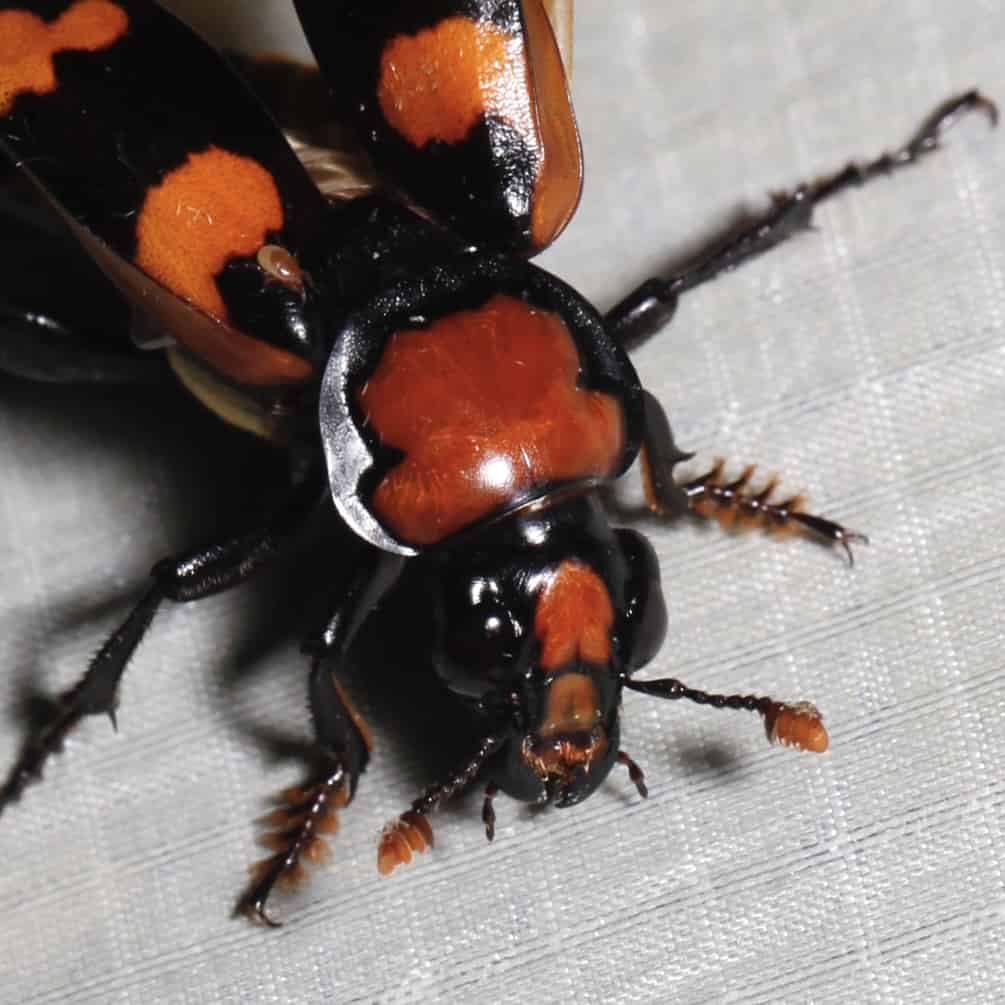
American burying beetles are equipped to seek out carrion (dead animals) from far away.
©Blocky1OOO / CC BY-SA 4.0 – License
2. Canterbury Knobbled Weevil
(Hadramphus tuberculatus)
The Canterbury knobbled weevil was thought to be extinct for nearly 100 years before scientists discovered living insects in 2004. However, with only about 130 adult weevils known to be alive today, this insect is still considered to be critically endangered. These rare insects live in the grasslands of New Zealand’s Canterbury region. They have dark brown bodies covered with gray-brown scales.
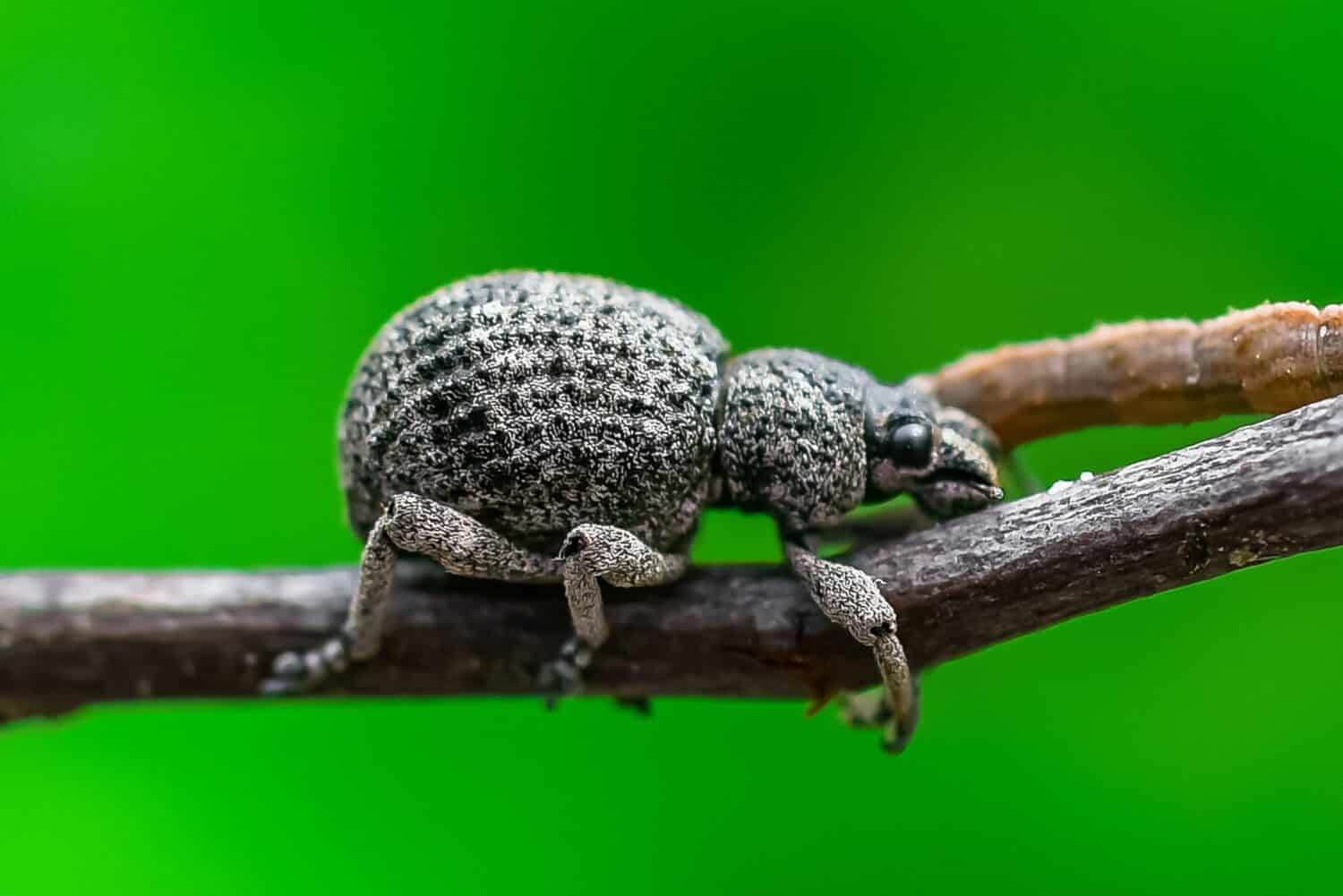
Canterbury knobbled weevils live in the grasslands of New Zealand’s Canterbury region.
©LocHuynh/Shutterstock.com
3. Hine’s Emerald Dragonfly
(Somatochlora hineana)
Hine’s Emerald Dragonfly is a rare dragonfly species that lives in the U.S. states of Illinois, Michigan, Missouri, and Wisconsin, and the Canadian province of Ontario. These dragonflies have green eyes, metallic green-colored thorax, and creamy yellow-colored lateral lines. They are considered to be among the most rare dragonflies in North America. The species continuously hovers on the brink of extinction and is one of the most endangered dragonflies.
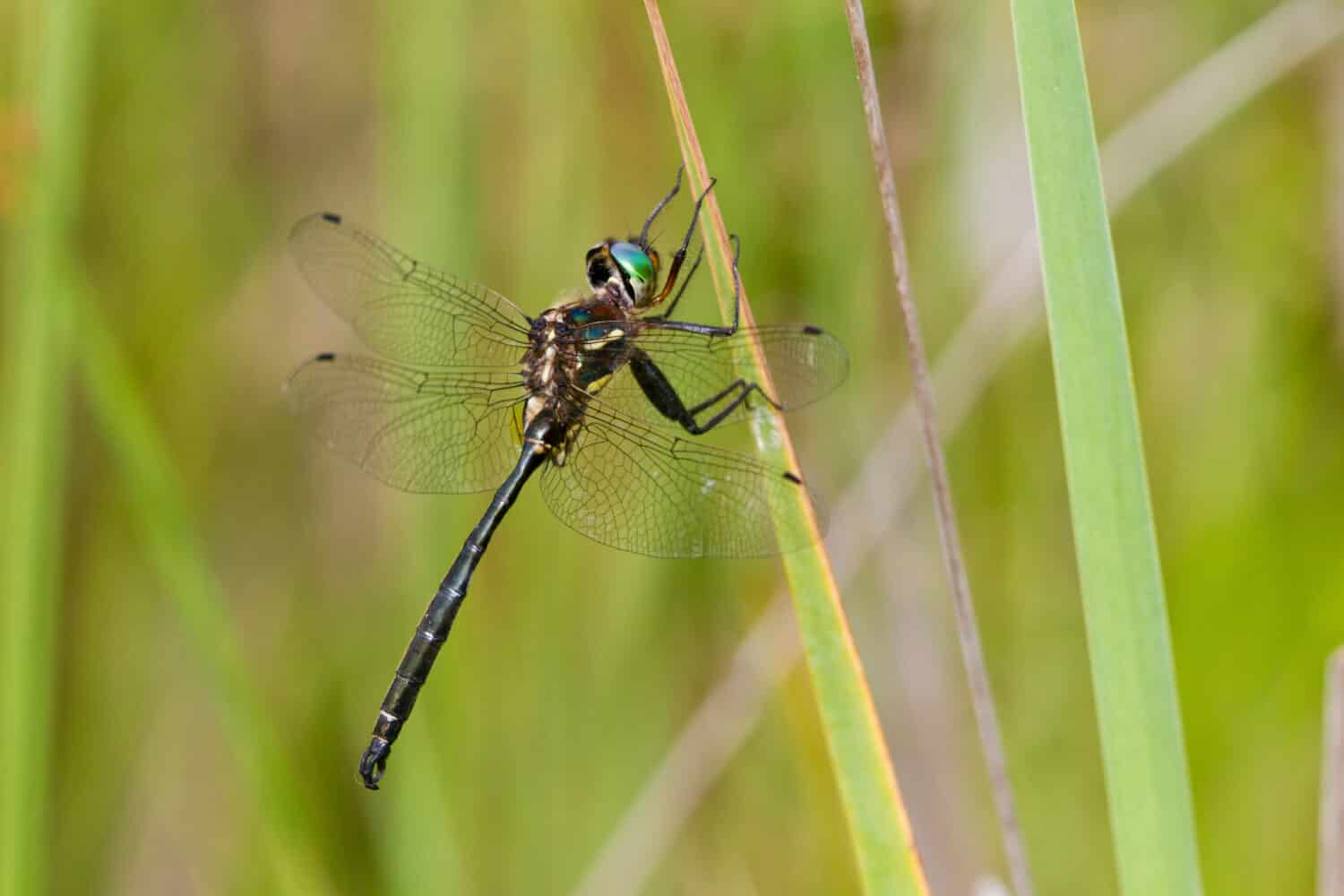
Hine’s emerald dragonflies are among the most rare dragonflies in North America.
©Danita Delimont/Shutterstock.com
4. Tiger Beetle
(Cicindelidae)
Tiger beetles are a family of beetles, many of which are endangered or threatened. Over time, as their native habitats have been destroyed, tiger beetles have become more rare. These insects are vulnerable because they are often restricted to living in sandy habitats. There, they can catch prey and their larvae can dig burrows. Because of this, tiger beetles are good bioindicators of the status and changes in the quality of the environment. Many species of tiger beetles are in decline. In fact, several are listed as endangered or threatened.
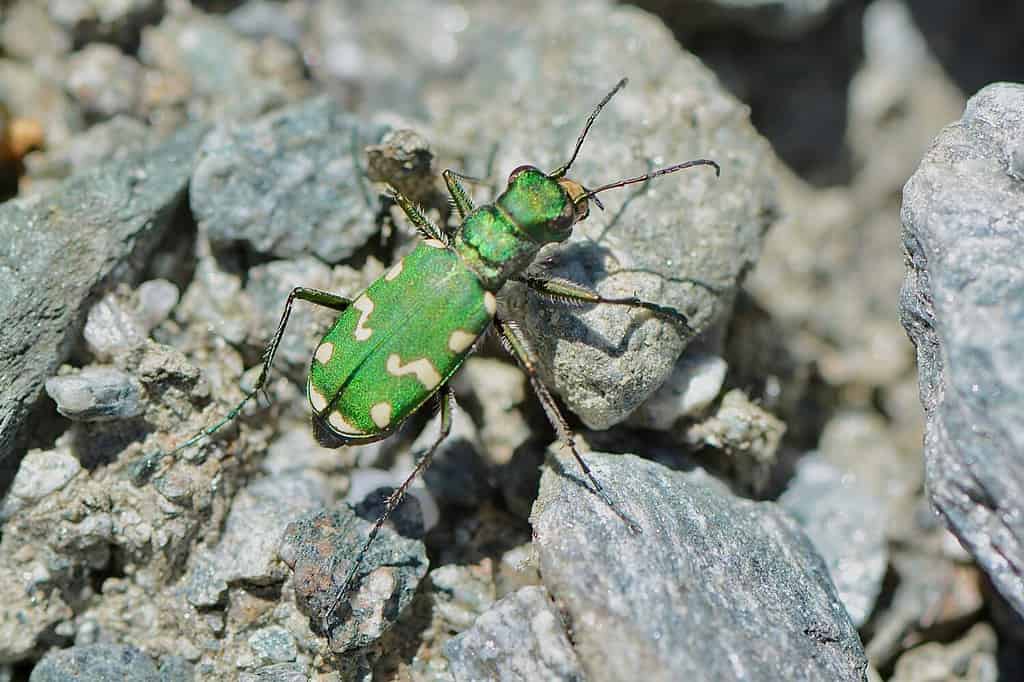
Tiger beetles are good bioindicators of the status and stability of the broader ecosystem.
©F.Demonsant/Shutterstock.com
5. Titan Beetle
(Titanus gigantes)
The titan beetle is a South American insect that inhabits the Amazon Rainforest. These huge insects can grow to be up to nine inches long, making them the largest beetle in the world. Titan beetles have dark brown bodies and strong jaws that can even cut through human flesh. Sadly, the native habitat of titan beetles is rapidly disappearing. This puts the entire species at risk. This enormous insect only lives in certain parts of South America. If you want to see one for yourself, you have to travel to countries such as Brazil, Colombia, Ecuador, Peru, and Bolivia.
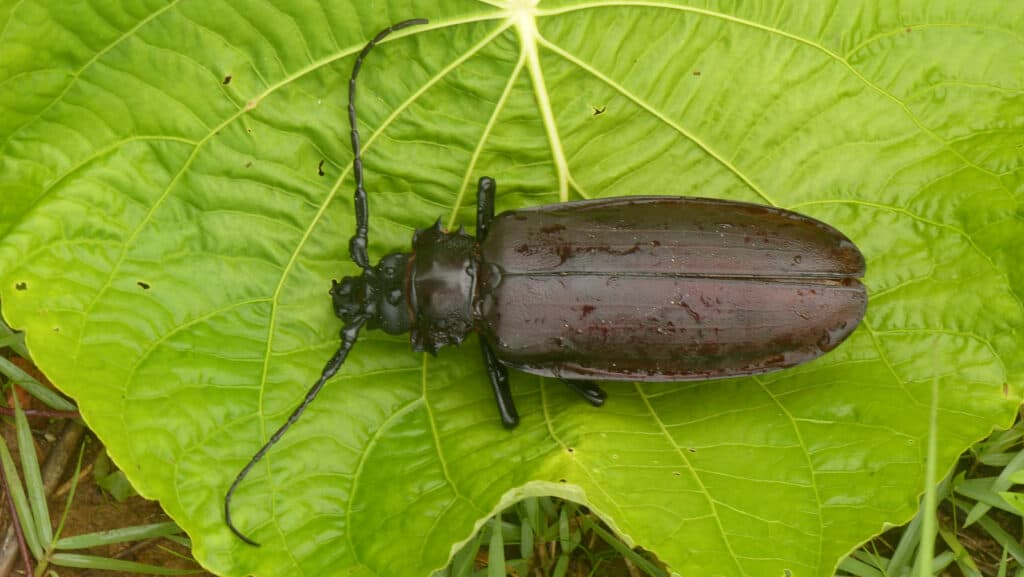
The destruction of the tropical rainforest threatens the long-term welfare of the titan beetle.
©guentermanaus/Shutterstock.com
6. Giant Lacewing
(Polystoechotes punctata)
The giant lacewing is a rare insect that can be found in parts of North America and Central America. This rare creature is a winged insect. It belongs to the most primitive group of living creatures in the order Neuroptera. When a scientist working in insect identification collected a giant lacewing in Fayetteville, Arkansas in 2012, it was an incredible discovery. However, because the insect was initially misidentified, the true impact of the find was not discovered until 2020. The specimen was the first recorded giant lacewing in eastern North America in 50 years. It was also the first one ever recorded in Arkansas.

The blue eyes lacewing (
Nymphes myrmeleonides), pictured above, is a more common relative of the giant lacewing, one of the most rare insects in North America.
©Cassandra Madsen/Shutterstock.com
7. Karner Blue Butterfly
(Lycanedes melissa samuelis)
The Karner blue butterfly is a small and endangered butterfly species. It lives as far west as Wisconsin and all the way east to the Atlantic coast. Though it historically lived throughout this range, today it is now limited to only small parts of New Hampshire, New York, Wisconsin, and Ohio. This insect is one of the rarest butterflies in the world. This is partially because Karner butterflies require a specific environment in order to live. Karner blue larvae can only eat wild blue lupine, so without these plants, the Karner butterfly cannot survive. These butterflies have small wingspans. They are only about an inch across. The color of their wings varies by gender. The male butterflies have silvery or dark blue wings with narrow black margins. The female butterflies have grayish-brown wings and irregular bands of orange inside a narrow black border.
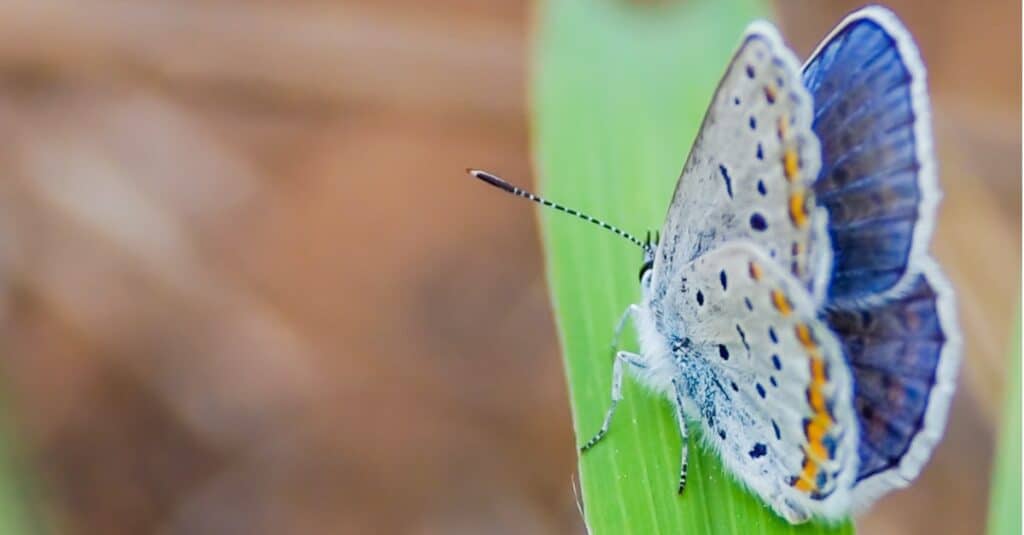
Karner blue butterflies are still fairly abundant in Wisconsin and Michigan. However, they are disappearing along with the wild blue lupine plants their larvae eat to survive.
©iStock.com/BobGrif
8. Lord Howe Island Stick Insect
(Dryococelus australis)
Perhaps the most rare insect in the world lives on Lord Howe Island, an island located between New Zealand and Australia. On this island live the extremely rare insect Dryococelus australis, which is also known as the “Lord Howe Island stick insect” or the “tree lobster.” These insects are so rare that they were once believed to be extinct dating back to the 1920s. However, scientists discovered a small number of living insects during the 2000s and began attempting to breed them. The Lord Howe Island stick insects have black-brown bodies which can reach an astonishing six inches long, strong bodies, and six legs. These insects only live on Lord Howe Island, and began a dramatic population decline after a shipwreck in 1918 brought a plague of rats that devoured and decimated the stick insect population.
Today, the most recent estimates suggest that there may only be 20 to 30 individual insects living on the islet of Ball’s Pyramid, just southeast of Lord Howe Island in the Pacific Ocean.
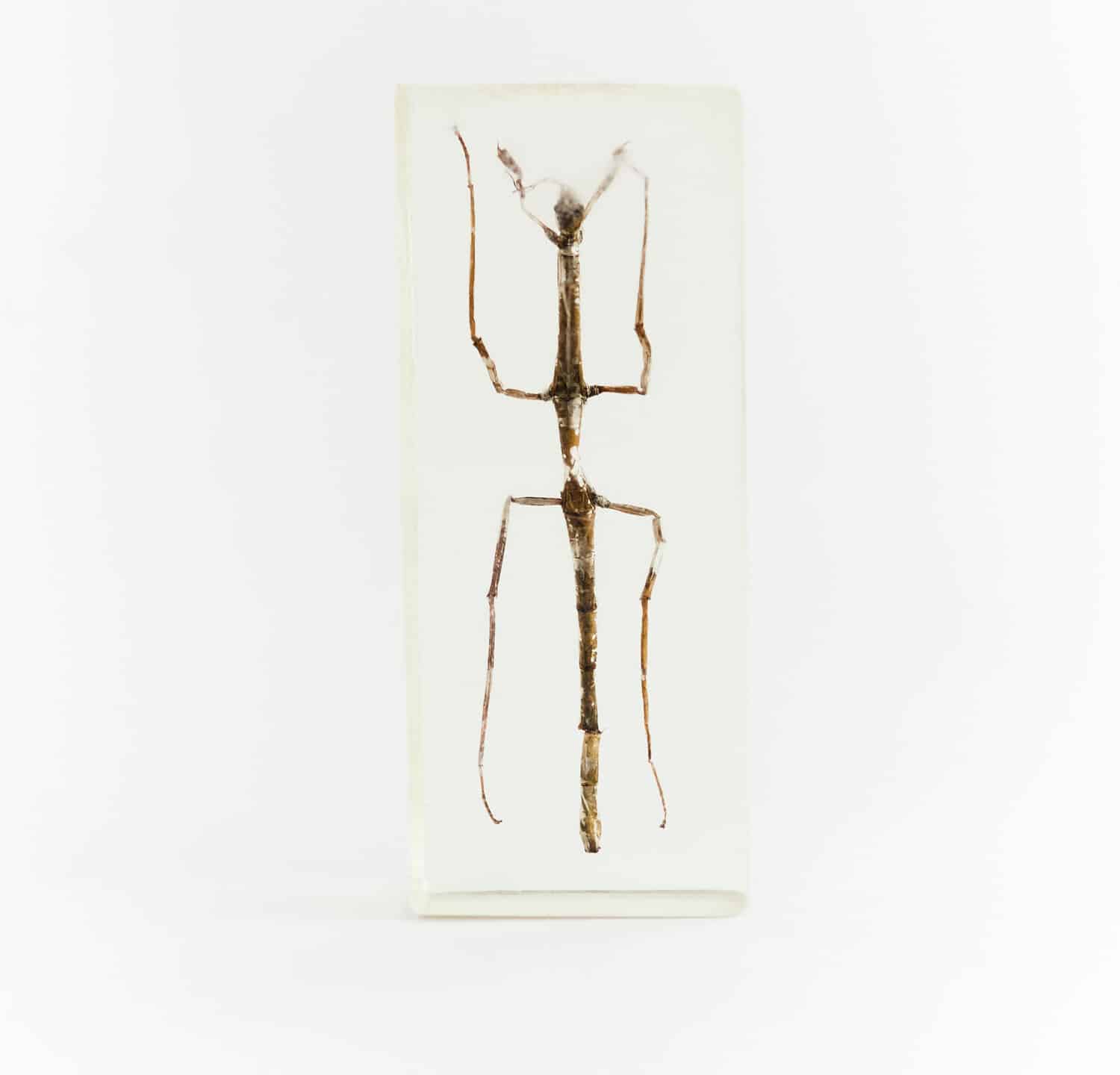
, also known as the “Lord Howe Island stick insect” or the “tree lobster,” is one of the most rare insects in the world.
©Juilett/Shutterstock.com
Threats to Rare Insects
These rare insects face a variety of threats, including habitat loss, factors related to climate change, development, and other environmental factors. A major threat to insects is the development of land, agriculture, and forestry leading to the loss of the native habitat or the plants the insect needs to survive. For example, the titan beetle has become rare due to deforestation in the Amazon Rainforest. The loss of land and plants that insects need to survive, the destruction of their nests and habitats, and the changes in weather due to climate change are among the most significant factors impacting these rare insects.
Another threat is the use of pesticides. For example, the American burying beetle has become endangered due to the loss of its native habitat as well as the pervasive use of pesticides in farming.
The introduction of foreign species can also cause harm to insect populations. In the case of the Lord Howe Island stick insect, the population became endangered and nearly extinct after the arrival of foreign animals, black rats, arrived on the isolated island and began devouring the insects. These rats also killed off the populations of twelve other invertebrates and five bird species that inhabited the island.
Significance of Rare Insects
Each of these rare insects on the list is important for several reasons. Like all insects in the world, they each serve a function. First, they contribute to the overall biodiversity of the ecosystems they live in. Each species in the world, whether big or small, has a role to play in the delicate balance of our world’s biological community. Insects are essential to pollination, decomposition, and ecological balance, and losing entire species disrupts the natural order of the ecosystem.
Second, rare insects often signal the overall health and well-being of ecosystems. Their presence or absence can indicate changes in the environment. Studying rare insects can help scientists accurately assess the bigger state of conservation efforts and environmental changes. In a world that is rapidly changing, the presence of rare insects has important implications for the future of our whole environment and the well-being of all plants, animals, and people.
Third, rare insects have important scientific and cultural value, as they can inspire people to have an interest in the natural world and may give people insights into biology, ecology, and broader scientific knowledge. People have plenty to learn about these insects, and those insights could inform advancements in science, technology, or medicine. Introducing people to rare and unusual insects can also be a wonderful way to get kids and adults of all ages interested in learning about the natural world.
Overall, rare insects are very important to the world, and understanding them is essential to preserving healthy, thriving ecosystems and protecting the planet for future generations.

Studying and tracking rare insects can provide important insights into the bigger ecosystem and state of conservation.
©MPIX.TURE/Shutterstock.com
Summary of The 8 Rarest Insects Still Crawling Around the World
| Rare Insect | Location | |
|---|---|---|
| 1 | American Burying Beetle | Texas, parts of the Midwest, and New England |
| 2 | Canterbury Knobbled Weevil | Canterbury Region of New Zealand |
| 3 | Hine’s Emerald Dragonfly | U.S. states of Illinois, Michigan, Missouri, and Wisconsin, and the Canadian province of Ontario |
| 4 | Tiger Beetle | All over the world in small numbers |
| 5 | Titan Beetle | Amazon rainforests |
| 6 | Giant Lacewing | North and Central America |
| 7 | Karner Blue Butterfly | New Hampshire, New York, Wisconsin, and Ohio |
| 8 | Lord Howe Island Stick Insect | Lord Howe Island, located between Australia and New Zealand |
The photo featured at the top of this post is © wagtail/Shutterstock.com
Thank you for reading! Have some feedback for us? Contact the AZ Animals editorial team.






